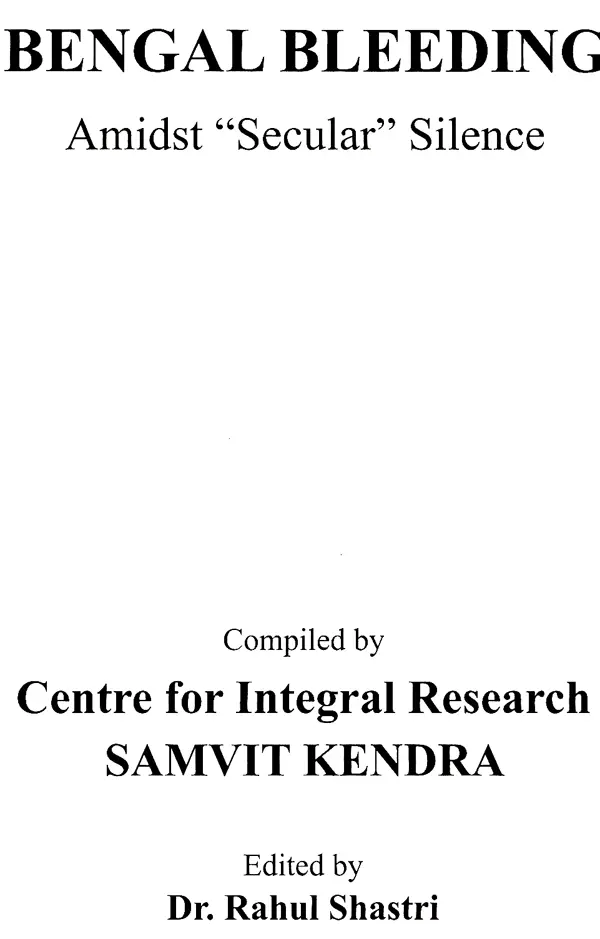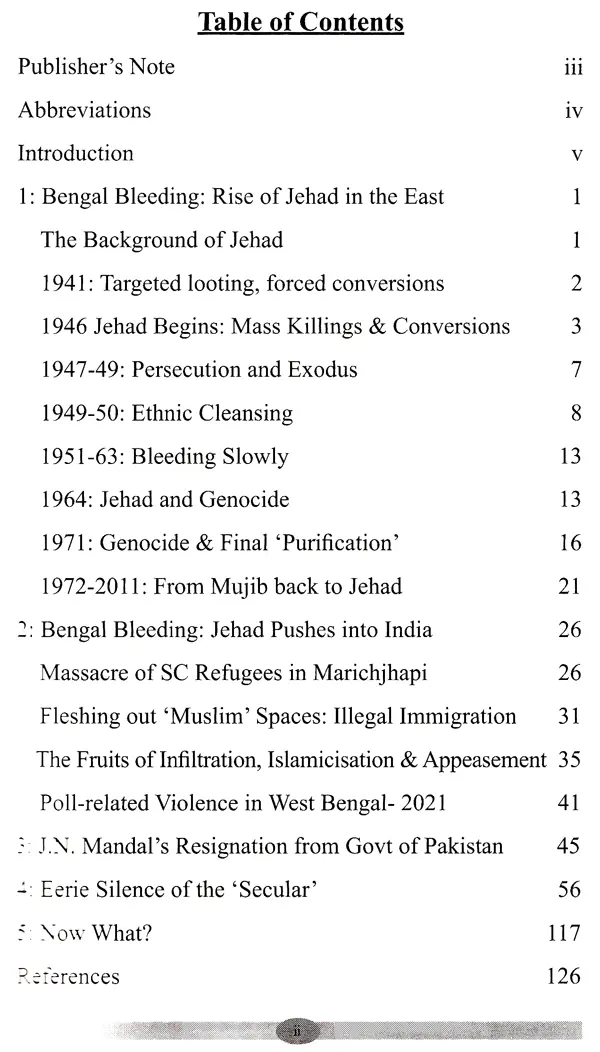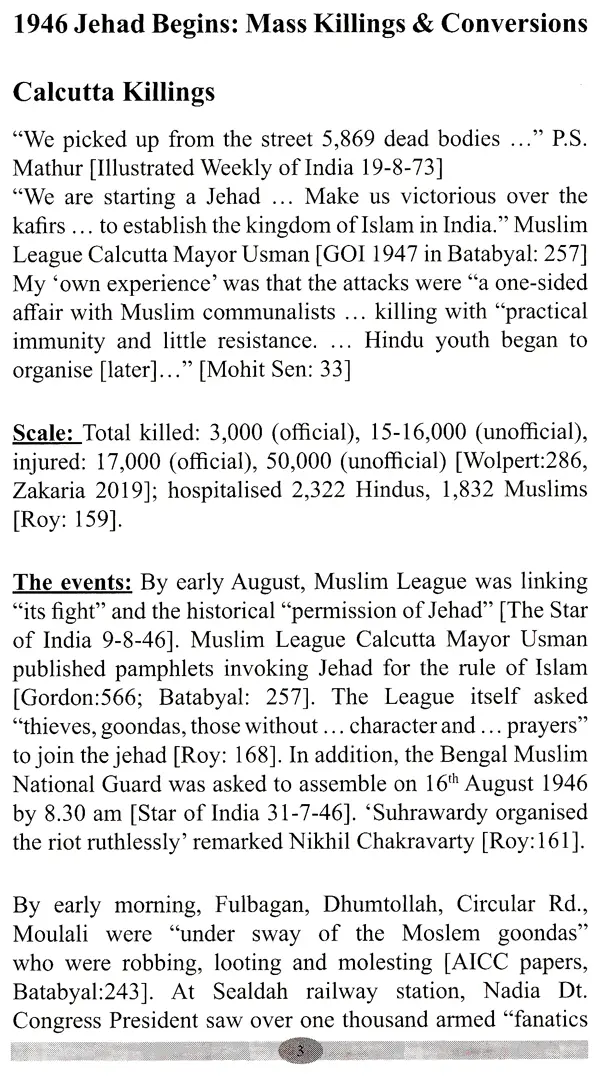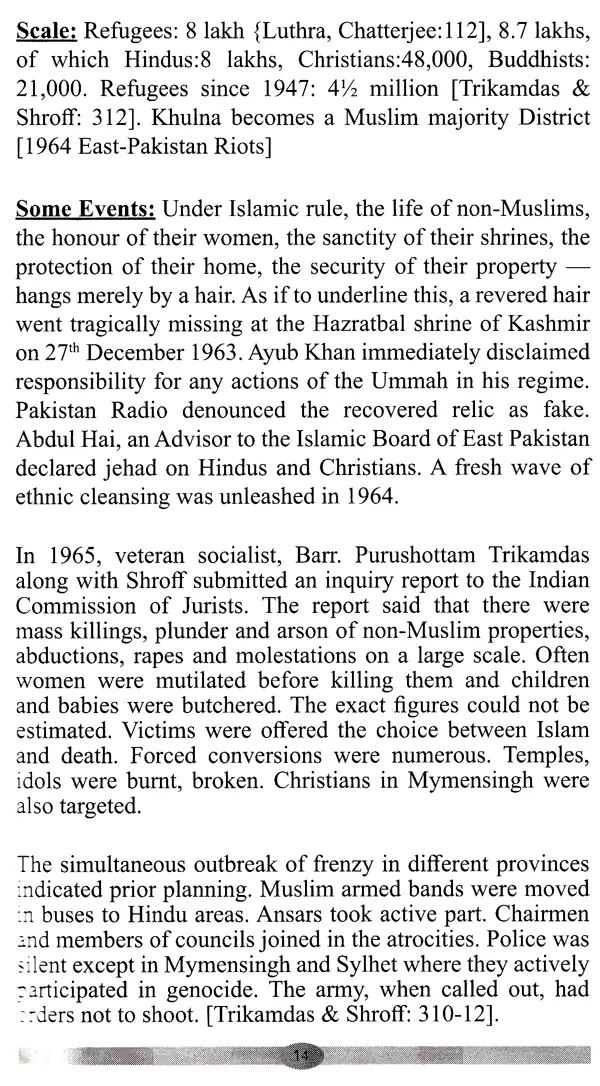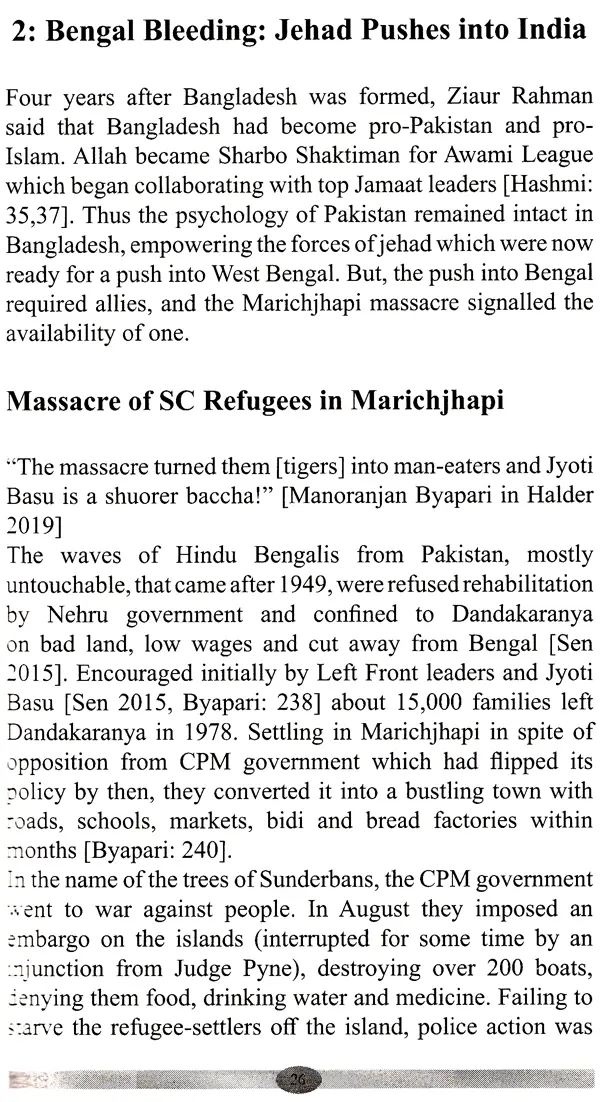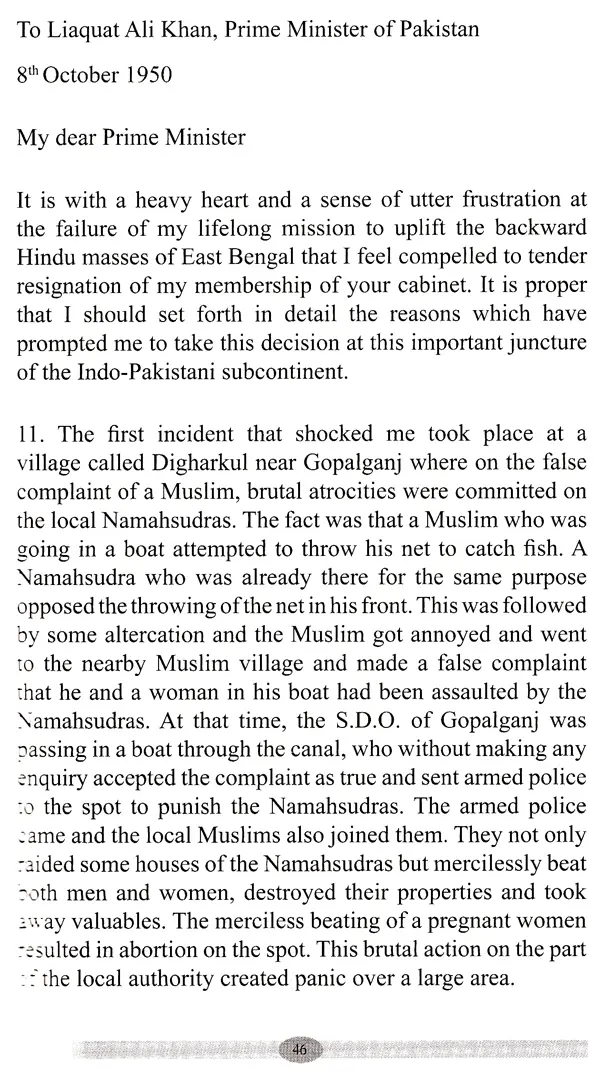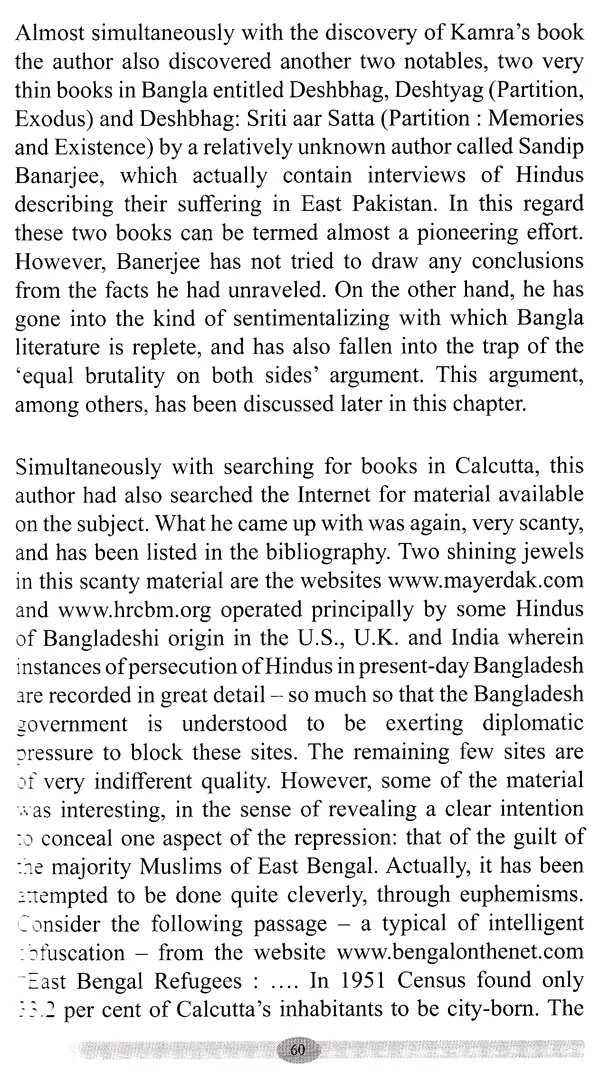
Bengal Bleeding Amidst "Secular" Silence
Book Specification
| Item Code: | UAS898 |
| Author: | Rahul Shastri |
| Publisher: | Samvit Prakashan and Media Pvt. Ltd. |
| Language: | English |
| Edition: | 2021 |
| ISBN: | 9788195048694 |
| Pages: | 131 |
| Cover: | PAPERBACK |
| Other Details | 8.50 X 5.50 inch |
| Weight | 190 gm |
Book Description
"Islam is being offered as the... democratic synthesis of Islamic equality and fraternity. In... the Shariat Muslims alone are rulers while Hindus and other minorities are zimmies who are entitled to protection at price, and you know... what that price is. - Jogendranath Mandal in 1950 (1st Law Minister of Pakistan) "On the Indo-Bangladesh border, growth of madrassas and mosques is taking place alongwith a shift in demographic composition due to illegal immigration of large number of people from Bangladesh into the border districts in India. Increasing crowding out of economic opportunities for the local population and the shift towards Islamization create potential for future strife. This is likely to put pressure on the strategic Siliguri corridor." The Task Forces on Internal Security (N.N. Vohra) and Border Management (Mr. M.Godbole) "Normally, the murder of five poor persons (including two women) belonging to.... scheduled-caste origin would create some furore. That wasn't the case with the riots in Juranpur of Nadia district, West Bengal..When murder of poor people elicits different responses, silences, solidarity and indifference based on who did the killing, we have a problem." Gargi Chatterjee, "The Case of Selective Silence and its Steep Cost". (DNA 15-5-15)
Recent events in Bengal, reports of post-poll violence, arson and loot, with thousands fleeing their homes to the security of neigh bouring states, have disturbed many. Bengal is bleeding. But Bengal has been bleeding for eight decades. The jehad that was declared in the streets of Calcutta in 1946 [Batabyal:257] was never really called off. There were short phases of less-conspicuous persecution, purification, consolidation and preparation that made way for the next explosion. Chapter One of this study gives glimpses of the inexorable operation of jehad in Bengal, especially in the east where it turned genocidal. Why jehad in the east? Jehad was needed to fight fitnah (ruling in non-islamic ways), to capture state power since Islam had to be "politically dominant" for the "sovereignty of God" [Rahman:207-8 passim]. Jehad is not only from animus for the kafir. Many think that Muslims are "positively and forcefully forbidden... to assume the culture and mode of life of non-Muslims" [Ispahani:38], that "Muslims should not look like non-Muslims" [Rahman:208]. Others even exhort Arabism [Rizvi:316]. In other words, jehad in Bengal was as much against kafirs as against Bengal itself, although at the outset, the dagger was pointed only at kafirs. It is true that such extreme views never won majority either in Pakistan or in the east. But its organisers do not depend only on "power through elections" alone, but also resort to "other means" [Jamaat acting chief to Hashmi:35]. Among these other means is the ancient art of influencing leaders overtly seen in the work of Abdul Wahhab and Shah Waliullah in pre-modern times. In Bangladesh, this art took the form of alliances (as with BNP), tacit agreement and vote bank transfers as with Awami League in 1996 [Hashmi:35-36]. Similar efforts may be expected in West Bengal as well. The fruits of such efforts are briefly examined in the second chapter of this book. In 1949, the Objectives resolution of Pakistan accepted the limits imposed by the prescriptions of Allah Almighty on the authority of the state. This empowered the demand for Shariah and shocked most Hindus and some secular Muslims who had been seduced by the assurances of leaders like Jinnah. One of them was Sri Jogendra Nath Mandal who had accepted the post of Minister of Law and Labour in Pakistan in the hope of bettering the lot of SCs who had stayed back in Pakistan. Shocked with the experience of Hindus and Muslim non-conformists under Islamism, he resigned through a letter detailing his experiences and assessments. Excerpts from this letter are reproduced in Chapter Three of this book. It would be wrong to take a monochromatic view of Muslims. There are many trends among the faithful, some extreme others moderate. Tareq Fatah for instance, contraposes the 'Islam of Allah to the Islam of the mullah'. This stresses the devotional Islam of the five pillars and discounts scriptures that date long after the Prophet. Indeed, such type of Muslims are ordinary in India forming easy friendships with non-believers. Unfortunately for Tareq, it is the 'mullah' who controls the mosque and madrassah, and dictates what is 'true' Islam.
**Contents and Sample Pages**
